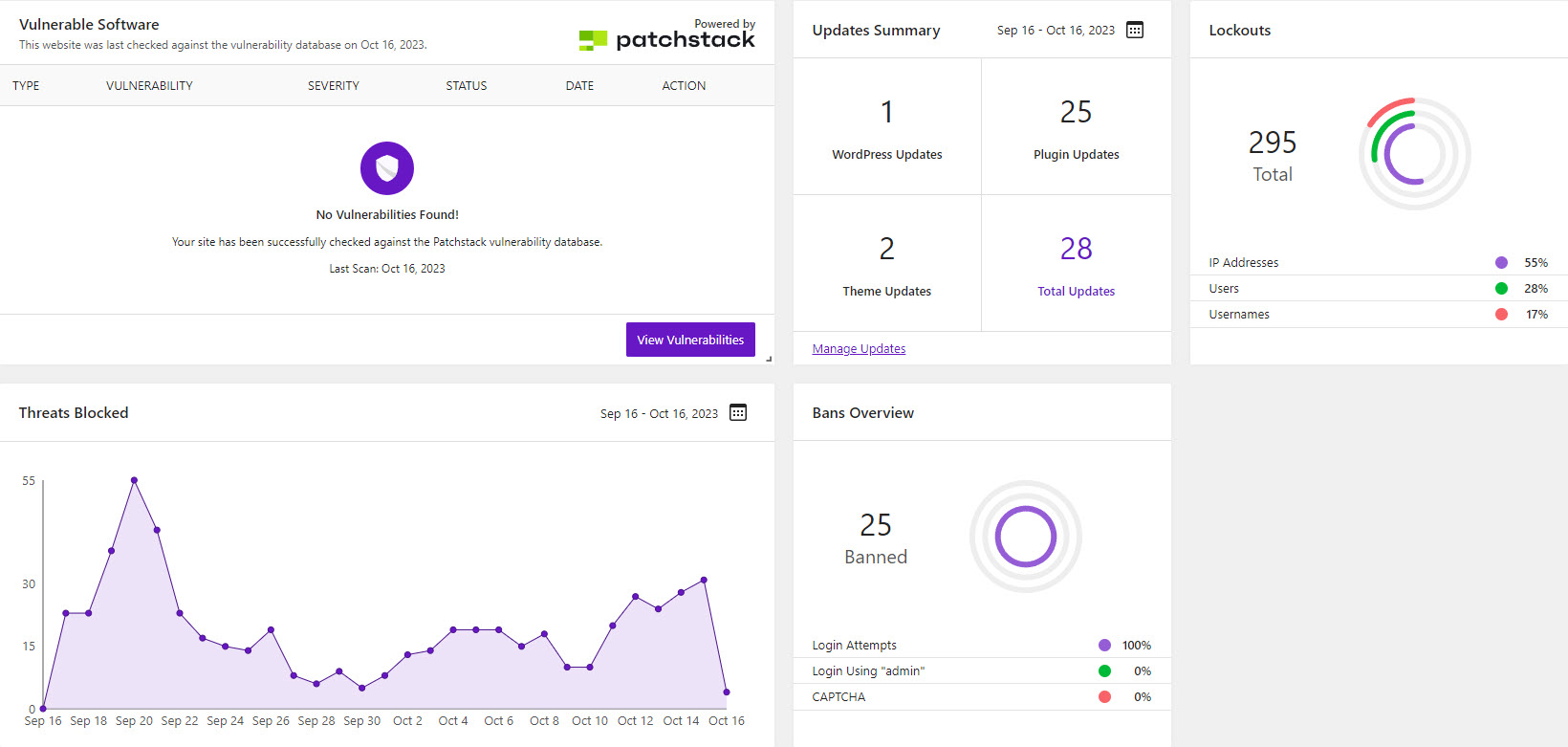Essential Website Updates – Boosting Safety, Performance, and Quality Improvement
Essential Website Maintenance & Updates
In today’s digital landscape, regular website updates are crucial for ensuring optimal safety and performance. In the last 15+ years we helped numerous businesses with fixing or restoring their websites, which were affected by vulnerable exploits or hacker attacks.
This article will delve into the importance of keeping your website up to date, focusing on three key areas: enhancing website security, optimizing performance, and quality improvements of the website..
We will explore the significance of updating content management systems, implementing SSL certificates, and patching software vulnerabilities. Additionally, we will discuss the importance of monitoring and testing website updates and maintenance to guarantee seamless functionality.
Key Takeaways
– Regular updates enhance website security and protect against cyber threats.
– Updating content management systems improves workflows, design, and accessibility.
– Thorough testing is crucial to ensure smooth website functionality and a positive user experience.
– Patching software vulnerabilities through effective patch management strategies minimizes the risk of exploitation by cybercriminals.
The Importance of Regular and Essential Updates

Regular updates are crucial for maintaining the safety and performance of any website. Implementing regular updates brings a multitude of benefits to website owners.
Firstly, updates enhance the security of the site by patching any vulnerabilities and protecting against cyber threats.
Secondly, updates often include bug fixes and performance improvements, resulting in a smoother user experience.
Despite these benefits, website owners face common challenges when updating their websites.
These challenges include compatibility issues with existing plugins or themes, the risk of potential downtime during the update process, and the need for thorough testing before deploying the updates.
To ensure a seamless update, we recommend following best practices, such as backing up the website, testing updates on a staging environment, and creating a rollback plan.
Failing to update a website can have a negative impact on user experience, as outdated websites may be slow, have broken links, or lack new features.
To aid in the process of updating websites, various tools and resources are available, such as content management systems with built-in update functionalities, automated update plugins, and online forums or communities where website owners can seek advice and support.
Over 60% of the websites are running outdated and vulnerable software.
Enhancing Website Security

To bolster website security, implementing robust measures is essential.
Website encryption is a fundamental security measure that protects data transmitted between the website and its users. It ensures that sensitive information remains confidential and cannot be intercepted by unauthorized individuals.
Password protection is another critical aspect of website security. Strong, unique passwords and regular password updates significantly reduce the risk of unauthorized access.
Firewall implementation is crucial for blocking malicious traffic and preventing unauthorized access to the website’s server.
Two-factor authentication adds an extra layer of security by requiring users to provide additional verification, such as a code sent to their mobile device.
Lastly, regular security audits help identify vulnerabilities and ensure that all security measures are up to date and effective.
Optimizing Website Performance
Implementing effective strategies to improve website performance is crucial for enhancing user experience and maximizing online success.
One key aspect of optimizing website performance is ensuring fast website speed. Slow loading times can result in high bounce rates and decreased user satisfaction.
To improve website speed, it is essential to optimize for mobile devices, as more and more users are accessing websites through their smartphones. This includes responsive design and mobile-specific optimizations.
Additionally, image optimization plays a significant role in website performance. Compressing and optimizing images can reduce file sizes and improve loading times.
Another effective strategy is implementing browser caching, which allows users to store certain web page elements locally, reducing the need for repeated downloads.
Lastly, minifying code by removing unnecessary characters and whitespace can further optimize website performance.
Updating Content Management Systems
When updating content management systems, it is essential to prioritize security and functionality. Streamlining workflows is an important aspect of content management system updates. By improving the way content is created, edited, and published, organizations can save time and resources. This can be achieved through the implementation of user-friendly interfaces, automation of repetitive tasks, and integration with other tools and systems.
Another crucial element is improving the user experience. This involves enhancing the overall design, navigation, and accessibility of the system. Mobile responsiveness is also vital, as more and more users access websites through their smartphones and tablets. Ensuring that the system is accessible to individuals with disabilities is another key consideration.
Lastly, integrating social media features can help organizations connect with their audience and increase website engagement.
Enhancing Website Compatibility
There are several strategies that can be employed to enhance website compatibility and ensure that it displays and functions correctly across different browsers and devices. Here are some key considerations:
1. Responsive web design: Implementing a responsive design allows your website to adapt its layout and content based on the screen size and resolution of the device being used. This ensures that your website is easily accessible and user-friendly on various devices, including desktops, laptops, tablets, and smartphones.
2. Cross-browser compatibility testing: Test your website on different browsers, such as Google Chrome, Mozilla Firefox, Safari, and Microsoft Edge, to ensure that it functions properly and looks consistent across all platforms. This includes checking for rendering issues, JavaScript compatibility, and feature support.
3. Standard-compliant coding: Adhering to web standards and using semantic HTML ensures that your website is interpreted correctly by different browsers. Following best practices for coding and utilizing CSS properly helps to avoid rendering issues and enhance compatibility.
4. Multimedia compatibility: When using multimedia elements like images, videos, and audio, make sure to use formats that are supported across different browsers and devices. Providing alternative formats or fallbacks for browsers that don’t support certain media types can help maintain a consistent experience for all users.
By implementing these strategies, you can significantly enhance your website’s compatibility, allowing visitors to have a consistent and user-friendly experience regardless of the browser or device they are using.
Implementing SSL Certificates
One crucial step towards enhancing the security and performance of a website is the integration of SSL certificates.
SSL encryption ensures that data transmitted between a user’s browser and the website is secure and protected from potential threats.
SSL certificates are issued by a certificate authority, which verifies the identity of the website and guarantees its authenticity.
By implementing SSL certificates, websites can establish a secure connection and enable secure data transmission. This is achieved through the use of the HTTPS protocol, which encrypts the data exchanged between the user and the website.
Implementing SSL certificates not only enhances website security but also improves website trustworthiness, as users can be assured that their sensitive information is being transmitted securely.
Patching Software Vulnerabilities
To further enhance website security and performance, it is essential to address the issue of software vulnerabilities through regular patching. This involves identifying and fixing weaknesses in software systems that can be exploited by cybercriminals. Here are three key considerations for patching software vulnerabilities:
1. Vulnerability assessment: Conduct regular assessments to identify potential vulnerabilities in your software. This can involve using automated tools or manual analysis to identify weaknesses and prioritize patching efforts.
2. Cybersecurity measures: Implement robust cybersecurity measures, such as firewalls, intrusion detection systems, and antivirus software, to protect your website from potential attacks. These measures can help detect and prevent unauthorized access and minimize the impact of unpatched vulnerabilities.
3. Patch management strategies: Develop and implement effective patch management strategies to ensure timely installation of software updates. This includes monitoring for new patches, testing them in a controlled environment, and deploying them promptly to minimize the window of vulnerability.
Monitoring and Testing Website Updates
As we delve into the subtopic of ‘Monitoring and Testing Website Updates’, it is crucial to ensure the seamless continuation of website security and performance improvements.
One key aspect to consider is user experience. Conducting thorough testing ensures that the website functions smoothly, providing a positive experience for visitors.
Mobile responsiveness is another critical factor to monitor. With the increasing use of mobile devices, it is essential that websites adapt and display correctly on different screen sizes.
Browser compatibility is also vital, as websites should be compatible with various browsers to reach a wider audience.
Additionally, testing should include SEO optimization to ensure that the website ranks well in search engine results.
Lastly, accessibility compliance should be tested to ensure that the website can be accessed by individuals with disabilities.

Frequently Asked Questions
How Often Should I Update My Website to Ensure Optimal Safety and Performance?
To ensure optimal safety and performance, it is crucial to regularly update your website. The frequency of website updates depends on various factors, such as the complexity of your site and the frequency of changes to your content.
Best practices for website updates include keeping your software and plugins up to date, implementing security measures, and regularly backing up your data. Regular updates offer numerous benefits, such as improved security, enhanced functionality, and better user experience.
Infrequent updates can expose your website to potential risks, including security vulnerabilities and performance issues. Prioritizing website updates based on their impact and urgency is essential for maintaining a secure and high-performing website.
Are There Any Specific Website Elements That Should Be Regularly Updated?
Regularly updating specific website elements is crucial for maintaining optimal safety and performance.
Design elements, such as layouts and color schemes, should be refreshed periodically to stay current and engaging.
The navigation menu should be reviewed and adjusted to ensure efficient user experience.
Contact forms should be regularly tested and updated to prevent any potential security vulnerabilities.
Images and media files should be optimized for speed and quality.
Lastly, plugins and extensions should be regularly updated to ensure compatibility and security.
What Are Some Common Security Issues That Can Arise if a Website Is Not Regularly Updated?
Website vulnerabilities, data breaches, malware attacks, outdated plugins, and exploited security flaws are some common security issues that can arise if a website is not regularly updated. These issues can result in unauthorized access to sensitive data, loss of customer trust, financial losses, and damage to reputation.
Outdated plugins and unpatched security flaws can serve as entry points for hackers to exploit and gain control over the website, compromising its safety and performance. Regular updates are essential to address these vulnerabilities and ensure the website’s security.
How Can Website Performance Be Negatively Impacted if Updates Are Not Regularly Implemented?
Website performance can be negatively impacted if updates are not regularly implemented. Failure to update a website can result in slow loading times, decreased responsiveness, and overall poor user experience.
Outdated software and plugins may not be compatible with newer browsers or devices, leading to compatibility issues. Additionally, not addressing security vulnerabilities through regular updates can leave the website susceptible to cyberattacks and data breaches.
Regular updates are essential for optimal safety and to mitigate common security issues.
Are There Any Risks Associated With Not Updating the Content Management System of a Website?
Not updating the content management system of a website can pose significant risks. Outdated systems are more vulnerable to security vulnerabilities, increasing the chances of hacking risks and data breaches.
Failure to update can leave the website susceptible to exploit known vulnerabilities, leading to unauthorized access and potential compromise of sensitive information. Regular updates are essential to ensure the website remains secure and protected against emerging threats.
What are essential website updates?
Essential website updates refer to regular updates and improvements made to a website to enhance its safety and performance. These updates are necessary to keep the website secure and running smoothly. This can include updating the website’s software, plugins, and themes to the latest versions, fixing any bugs or glitches, optimizing site speed, and implementing security measures.
Regular updates also ensure compatibility with the latest web browsers and mobile devices, providing a better user experience for visitors. These updates may also include adding new features or improving existing ones to enhance the functionality and usability of the website.
How can essential website updates boost safety?
Essential website updates can boost safety by implementing necessary security measures, identifying and addressing vulnerabilities, and ensuring Regular updates are necessary to address security vulnerabilities and protect the website from cyber threats. Website owners must consistently evaluate and implement new security measures to stay ahead of potential risks and keep user data secure.
Optimizing performance is another critical aspect of regular website updates. By keeping up with the latest web development techniques and technologies, website owners can ensure that their sites are loading quickly and efficiently, providing users with a smooth browsing experience.
Updating content management systems (CMS) is essential to maintaining a secure and well-functioning website. CMS updates often include bug fixes, security patches, and new features that improve the overall performance and functionality of the site.
Implementing SSL certificates is a crucial step in securing a website. SSL certificates encrypt the connection between the user’s browser and the website, ensuring that sensitive information transmitted over the internet is protected from interception.
Regularly patching software vulnerabilities is vital for maintaining website security. Software vulnerabilities can be exploited by hackers to gain unauthorized access to the website and compromise user data. By promptly applying security patches and updates, website owners can prevent such vulnerabilities from being exploited.
How do essential website updates contribute to quality improvement?
Essential website updates contribute to quality improvement by enhancing website functionality, user experience, and efficiency, which ultimately leads to better outcomes and satisfaction for users. By regularly updating a website, businesses can enhance the security of their online platform and protect their users from potential risks and threats.
Conclusion
In conclution, regular website updates are vital for maintaining the safety and performance of a website. By implementing security measures, optimizing performance, updating CMS, utilizing SSL certificates, and patching software vulnerabilities, website owners can protect their platforms and provide a seamless user experience.
Continuous monitoring and testing are essential to ensure the effectiveness of these updates and maintain the overall integrity of the website. compliance with safety standards. By implementing necessary security measures, a website can protect against cybersecurity threats and reduce the risk of unauthorized access or data breaches. This involves implementing SSL/TLS certificates to enable secure communication, implementing secure coding practices, and using web application firewalls.
Identifying and addressing vulnerabilities is crucial to maintaining a safe website. Regular security audits and penetration testing can help identify any weaknesses or loopholes that might be exploited by hackers. The website should also prioritize prompt patching and updating of software, plugins, and frameworks to address any known vulnerabilities.
Ensuring compliance with safety standards is essential for websites, especially those that deal with sensitive user data or financial transactions. This includes complying with regulations such as the General Data Protection Regulation (GDPR) for user data privacy and Payment Card Industry Data Security Standard (PCI DSS) for secure payment processing. Implementing appropriate user authentication measures and data encryption protocols can further enhance safety and compliance.
Contact us today for your website maintenance plan.



